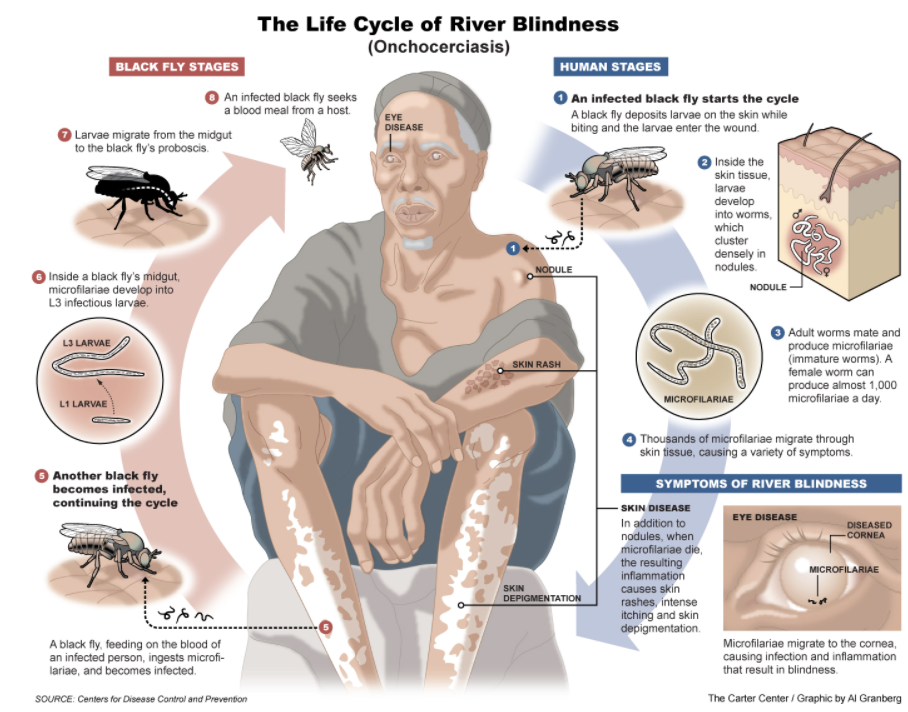Onchocerciasis, caused by black flies, affects inhabitants of Africa and Latin America.
Imagine that as you move your eyes, darkness extends in every direction. This is one of the main symptoms of River Blindness, a disease that infects many in Africa and Latin America. The scientific name for river blindness is Onchocerciasis (1). This parasitic infection is caused primarily by swimming in dirty rivers, lakes, and other bodies of water. The infection causes itching, rashes, skin discoloration, and blindness. Infected black flies carry the disease and spread it.
The Global Burden of Disease Study estimated 20.9 million people were infected with Onchocerciasis in 2017. Of these 20.9 million, 14.6 million had skin diseases and 1.15 million lost some level of vision. 99% of those infected live in Africa with the remainder being spread out between Yemen and parts of Latin America (2). Places with below average drinking water and dirty rivers are affected most severely since dirty water is the breeding ground for the black flies. The disease is caused by the parasitic worm named Onchocerca volvulus (1). Onchocerciasis is the second most common disease that can lead to blindness, behind Trachoma (3). The fight against Onchocerciasis is flourishing with countries like Colombia, Ecuador, Mexico, and Guatemala freeing themselves of river blindness (2).
The best way to prevent river blindness is to stay away from dirty, flowing rivers and to avoid black flies. The best way to protect against these dangerous bugs is wearing bug spray that contains deet and staying away from countries that are known to have Onchocerciasis. Using DEET will also help repel bugs that carry different diseases like dengue fever (2).

Further, countries that are known to carry river blindness are taking great steps to eliminate it. Their primary measure against the disease is spraying insecticide where blackflies breed to prevent the disease vector at its source; afflicted countries can disrupt the life cycle and stop new breeding (2). As for treatment, One solution involves a drug administered to the human population; ivermectin disrupts the life cycle and helps kill the disease before it can be spread. Some countries currently preemptively distribute ivermectin to help ensure safe travels and decreased rates of the disease.
Bibliography:
- World Health Organization. (n.d.). Onchocerciasis (river blindness). World Health Organization. Retrieved October 19, 2021, from https://www.who.int/westernpacific/health-topics/onchocerciasis.
- Centers for Disease Control and Prevention. (2020, September 17). CDC – Onchocerciasis – General Information – Frequently asked questions. Centers for Disease Control and Prevention. Retrieved October 19, 2021, from https://www.cdc.gov/parasites/onchocerciasis/gen_info/faqs.html#what.
- River blindness elimination program. The Carter Center. (n.d.). Retrieved October 19, 2021, from https://www.cartercenter.org/health/river_blindness/index.html.
